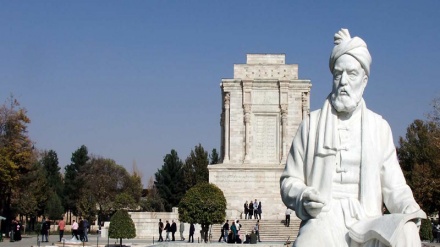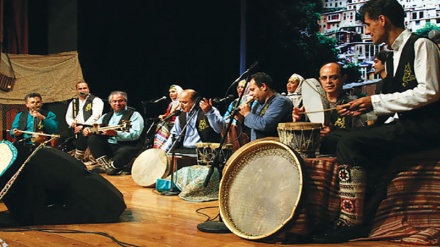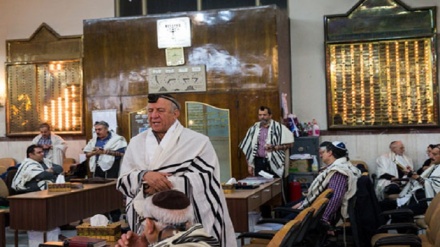Iran, land of various ethnicities (16)
This time you are going to get familiar with the people of Mazandaran Province and some of their traditions and customs.
Located on the Caspian Sea coastline, Mazandaran province borders with Golestan province in the east, Semnan, Tehran, Alborz and Qazvin provinces in the south and Gilan province in the west.
Damavand summit, the highest mountain in Iran, is located in this province. Mazandaran province is very rich in tourist attractions and in fact it ranks first in Iran in this regard. Some researches show that sedentism had occurred here for the first time. Being located in the south of the Caspian Sea, as the largest enclosed inland body of water, Mazandaran province enjoys very picturesque natural sceneries.
In addition to the native people, there are other ethnic groups such as Baluch, Turk, Kurd, Lor, Afghan, Georgian and Armenian ethnicities in this province. These people have somehow preserved their cultural features. The people of Mazandaran speak in Tabari or Mazani dialect of Farsi language. This dialect is a survivor of ancient Iranian languages and has been affected by other languages. Till the 5th century AH the rulers of Tabaristan (ancient area covering modern Mazandaran and Golestan) used to write in Pahlavi script and mint coins. Two scripts that have been discovered at two villages of Mazandaran province confirm this issue.
Prior to the entrance of the Aryans to the Iranian Plateau, the indigenous people of Mazandaran were engaged in hunting and animal cattle-breeding to make a living. Archaeological studies around Behshahr city indicate the presence of man in the region in nearly 9500 BC. The modern Mazandaran is part of a vast swathe of land that used to be called Farshwārdgar. Padishkhwārgar or Patishkhwāgar which later orthographically morphed into Farshwārdgar is the Middle Persian name of a vassal kingdom and later province of the Sasanian Empire. A vast region in the south of the Caspian Sea was called Tabarestan. Mazandaran covers a vast part of Tabarestan. Tabarestan, due to the climate and geographical location, enjoyed special status among rulers. Anyhow, the name of Tabarestan was replaced by Mazandaran around the 7th century AH (12th century BC).
Some historians and writers believe that the name of Mazandaran derives from the word “Maaz” meaning fortification. Others say that Maaz also means honeybee; hence Mazandaran means a place where there are a lot of honeybees.
A number of the customs and traditions of Mazandaran have remained with some changes through the course of time. Some of them are Nowruzkhani, Eid Nowruz, Yalda Night and so on.
Nowruzkhani: The itinerant singers come to different villages and give the tidings of coming of Nowruz (the New Iranian Year) with reciting local songs and poems. One of these people sings, another one plays the music and the third one goes from one house to the other while singing a song himself. Then he is given various items such as money, cookies, walnuts, eggs and so on.
Eid Nowruz (Feast of the New Iranian Year) is held with all members of the family. They sit round a tablecloth called Haft Seen. Then the father of the family recites the prayer for the turn of the year. Then the mother enters the room with a tray I her hand. Inside the tray there is a mirror, a bowl of water, fresh green sprouts, Qur’an and a few green twigs. She hangs the twigs on the entrance of the room or puts them on the shelf as a symbol of greenery, fertility and happiness.
Another custom is held on the 26th of the Tabari calendar (28th of the Iranian month of Tir). Around Savadkuh, this custom is held with special ceremonies. According to some beliefs, king Fereydun, of the Pishdadi dynasty, captivates Zahhak on Damavand Mountain to avenge the blood of his father, king Jamshid. People spread the news of this victory with making fire. The day after, they mark the event via festivities and traditional Locho wrestling. Today, in some the villages of Savadkuh people gather round the graves of their dead and watch the Locho wrestling.
Yalda: The longest night of the year is called Yalda among most of the Iranian ethnicities. But in Mazandaran it is called “Get Chelleh” or Chelleh Sho”.
According to a tradition, in the last night of autumn family members and relatives gather at the house of the elderly. They eat fruits like watermelon and pomegranate and nuts.
Dandansari: This is another tradition that is customary in Mazandaran. When the first teeth of the infant teethe, the mother prepares special pudding or broth with rice or legumes. Then she distributes it among the relatives. The relatives usually put gifts such as socks, scarf or money in the empty bowl and send it back to the family of the infant.
Wedding ceremony is also significant in Mazandaran. It is held at the house of the bride’s father. Then she is taken to the groom’s house on a horse. The groom, riding a horse, welcomes the bride from a distance and the bystanders scatter pastries and coins. In the old days people used to throw sour orange, instead.
RM/EA


